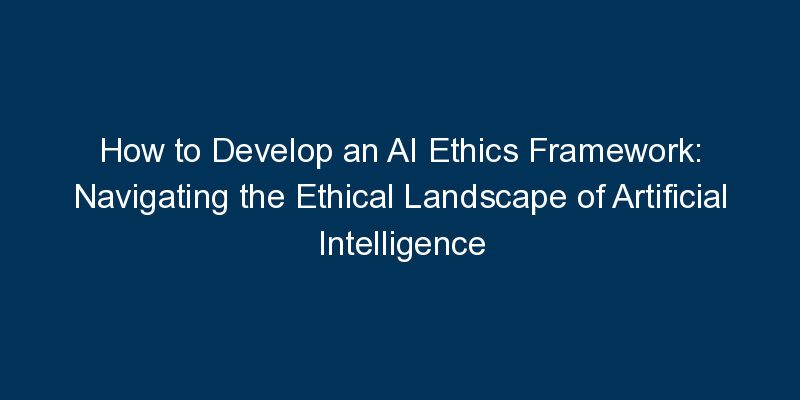As artificial intelligence (AI) continues to advance, the importance of ethical considerations becomes paramount. This blog provides a step-by-step guide on how to develop an AI ethics framework, empowering organizations to navigate the ethical challenges associated with AI technologies.
Introduction:
The ethical implications of AI technologies require careful consideration and guidance. Developing an AI ethics framework provides a structured approach to addressing ethical concerns and ensuring responsible AI deployment. This guide explores the key steps in establishing an AI ethics framework.
Key Steps to Develop an AI Ethics Framework:
- Define Ethical Principles: Clearly define the ethical principles that will guide AI development and deployment within your organization. Common principles include transparency, fairness, accountability, and inclusivity.
- Cross-Functional Collaboration: Foster collaboration between diverse teams, including ethicists, data scientists, developers, and legal experts. This ensures a holistic and multidisciplinary approach to addressing ethical considerations.
- Risk Assessment: Conduct a comprehensive risk assessment to identify potential ethical risks associated with AI applications. This includes biases in algorithms, privacy concerns, and the societal impact of AI technologies.
- Regulatory Compliance: Ensure compliance with existing regulations and standards related to AI ethics. Stay informed about evolving legal frameworks and adapt your AI ethics framework accordingly.
- Ethical AI Training: Provide training and awareness programs for employees involved in AI development and deployment. Ensure that teams understand the ethical principles, potential risks, and the importance of responsible AI practices.
- Continuous Monitoring and Evaluation: Implement mechanisms for continuous monitoring and evaluation of AI systems. Regularly assess the impact of AI technologies on different stakeholders and make adjustments to the ethics framework as needed.
Conclusion:
Developing an AI ethics framework is a crucial step in ensuring that AI technologies are deployed responsibly and ethically. By following the steps outlined in this guide, organizations can establish a framework that aligns with their values, mitigates ethical risks, and promotes the responsible use of artificial intelligence.






















Comments